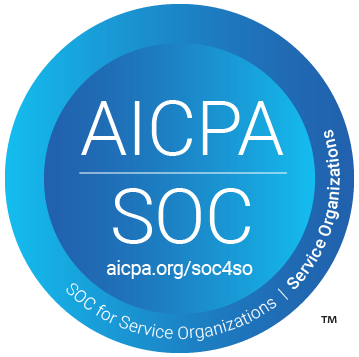In a competitive market, organizations are challenged to differentiate themselves by innovating ahead of the competition. To ensure a competitive edge, many industries rely on business intelligence (BI) solutions – and the healthcare industry is no exception. Let’s explore some of the ways companies use healthcare business intelligence.
What is business intelligence in healthcare?
Beginning in the 1960s, the term business intelligence was used to describe a system of sharing information across organizations. This concept evolved in the 1980s with the introduction of computer modeling for decision-making and strategic planning. BI, as we know it today, is a specific type of technology that combines business analytics, data mining, data visualization, data tools and infrastructure, and best practices to help organizations identify any actionable insight to make more data-driven decisions.
According to Research and Markets, the healthcare business intelligence market is growing steadily, valued at $3.4 billion in 2022 and estimated to reach $7.4 billion by 2032. Factors driving the market’s growth include an industry-wide interest in controlling costs and the ongoing shift to data-driven medical decisions.
How does BI manage large quantities of complex healthcare data?
The business of healthcare – research, development, patient care, patient advocacy, clinical studies, and more – generates so much information that it defies traditional informational storage and data management systems. Fortunately, advances in medical technology, digitized records, and data analytics can handle the collection, storage, and processing of these large volumes of data.
Where does all this data come from? It’s generated from a variety of sources and is sorted into six primary types:
- Electronic health records, such as information obtained at the point of care, such as a medical facility, hospital, or clinic.
- Administrative data, including information that might be reported to government agencies or other entities.
- Claims data, such as billable interactions between insured patients and the healthcare delivery system.
- Patient/disease registries, which track critical data for chronic conditions like Alzheimer’s disease, cancer, diabetes, heart disease, and asthma.
- Health surveys that evaluate population health and establish disease prevalence estimates. Clinical trials data, which may be available to researchers or the general public.
Each type of data is subject to various regulations and privacy requirements and must be carefully protected and monitored. Therefore, healthcare organizations often have a complex and diverse ecosystem of applications, which can make surfacing insights difficult. With business intelligence, a data warehouse can centralize data from any data source so that managers and analysts can access all of it for use with BI software.
How does BI impact patient care?
When healthcare organizations use analytics and reporting to drive data-driven insights and improve patient care, it’s known as clinical business intelligence or healthcare business intelligence. Clinical organizations use business intelligence to store data, keep patient data secure, and conduct analysis and reporting.
Healthcare organizations generate a huge amount of data from a variety of sources, including:
- Electronic health records (EHRs)
- Patient feedback
- Operational data
- Financial data
In organizations that are less data-mature, this information is likely stored and analyzed in multiple, disconnected systems. A single, centralized solution provides access to all data, along with the ability to track key performance indicators (KPIs) and patient outcomes. Here are some examples of how healthcare organizations use clinical BI to improve patient care:
- Symptom-based treatment planning
- Scheduling staff based on patient volumes
- Facility supply chain management
- Identifying patients for follow-up care
- Tracking readmission rates
Clinical BI can integrate a patient’s medical history into the patient care plan and alert providers and caregivers if a newly prescribed medication interacts with another medication. Technology can be used to support patient portals and dashboards that allow patients to schedule appointments, fill out forms online, and view or pay bills. This change leads to improved patient processing, patient experience, and greater patient satisfaction.
Patients can also be reassured of their data privacy because these platforms are designed to keep data secure and accessible. When healthcare is convenient for patients, they have positive experiences, keep their appointments, and have better outcomes. – Tableau
What’s the difference between business intelligence and insights management?
While there are numerous applications for business intelligence in pharma, these global organizations may use other solutions, such as insights management, to drive processes and decisions specific to drug and device development. Whereas BI tools act as a combination data warehouse, visualization, and analytics platform for information generated throughout the enterprise, an insights management platform for life science is designed to capture and interpret observations and other data obtained during the product lifecycle. Insights management solutions may also include the ability to present data on a specific disease community, provide insight into online conversations through the use of social media listening, and collect and analyze insights from discussions with healthcare providers.
Traditionally, there were a handful of information streams that life science companies used to inform scientific narratives, including advisory board meetings, large in-person events like medical conferences, and one-on-one meetings with key opinion leaders. Some organizations used pandemic-related travel restrictions as a time to learn how to run a successful virtual conference of their own – providing yet another data stream. Now, these channels have multiplied and include virtual advisory boards, post-conference huddles in healthcare, social channels, and other types of digital interaction. All of this information can be used to streamline, shorten, or improve processes that take place from research and development through launch and post-market monitoring – but it must be processed through a single platform to be most effective.
Life science teams are turning to insights management for a variety of reasons: the proliferation of data generated via multiple channels, an increased appetite for digital transformation, and the need for faster, more precise decisions. Learn more about the trends driving the adoption of insights management in our blog post.






